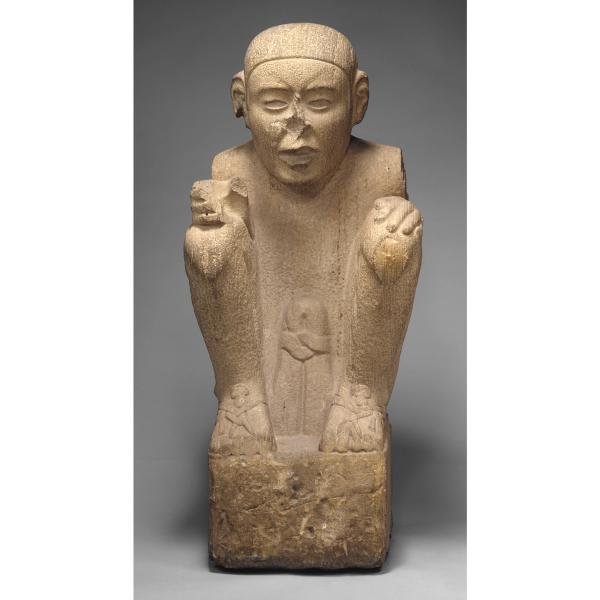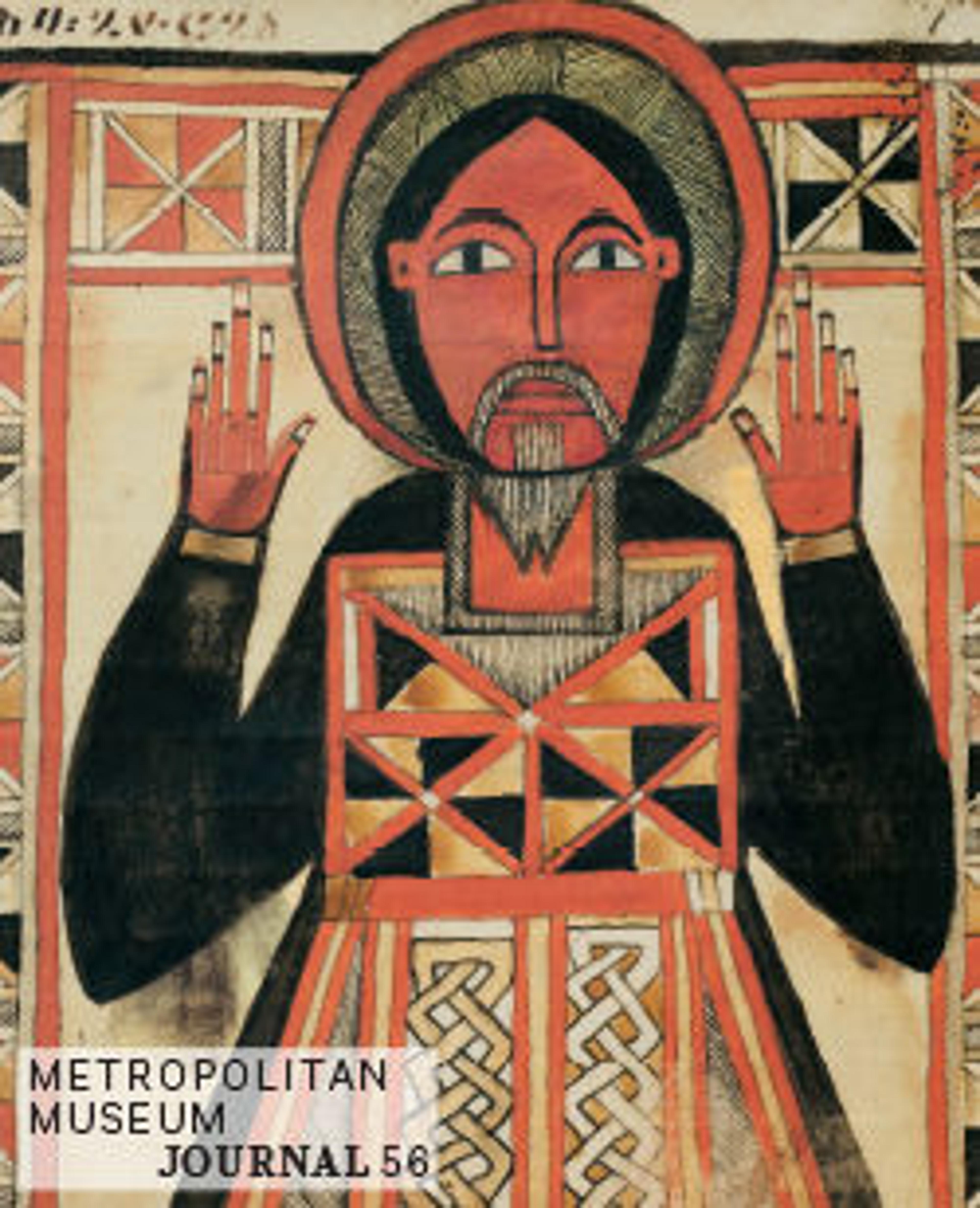Standard bearer
The sculpture comes from the town of Castillo de Teayo in northern Veracruz, where a temple pyramid and a number of sculptures were discovered in 1903. The sculptures are carved in a provincial version of the metropolitan Aztec style.
Artwork Details
- Title:Standard bearer
- Artist:Mexica or Veracruz artist(s)
- Date:1200–1521 CE
- Geography:Mexico, Mesoamerica, Veracruz
- Culture:Mexica
- Medium:Sandstone
- Dimensions:H. 31 11/16 × W. 13 7/16 × D.13 1/16 in. (80.5 × 34.1 × 33.1 cm)
- Classification:Stone-Sculpture
- Credit Line:Harris Brisbane Dick Fund, 1962
- Object Number:62.47
- Curatorial Department: The Michael C. Rockefeller Wing
Audio

1642. Portaestandarte, artista(s) mexica(s) o veracruzano(s)
Leonardo López Luján
LEONARDO LÓPEZ LUJÁN: Esta es, sin lugar a dudas, una de las esculturas más espectaculares del arte mesoamericano. Y, entre otras cosas, destaca por un excepcional naturalismo. Se ve en todos los detalles de su cuerpo, y sin duda dos bellas sandalias que nos indican que es un personaje de alto rango. Los campesinos en Mesoamérica y sobre todo en el post clásico, no usaban sandalias, andaban descalzos y este era un privilegio de los dignatarios.
Pues vemos que su mano izquierda descansa sobre su rodilla. En cambio la derecha que está parcialmente destruida tiene una cavidad donde se alojaba un asta donde se alojaba un estandarte.
JOSÉ MARÍA YAZPIK (NARRADOR): Esta escultura que probablemente sostenía un estandarte, fue creada por artistas mexicas, a veces conocidos como "aztecas". De hecho, el término azteca se refiere a los gobernantes y habitantes de una isla mítica llamada Aztlán. El arqueólogo Leonardo López Luján nos relata la historia del origen mexica.
LEONARDO LÓPEZ LUJÁN: En algún momento decidieron abandonar a sus amos y guiados por el líder que adoptó la forma de un colibrí o de un águila, Huitzilopochtli, abandonaron la isla. Huitzilopochtli les dijo twi twi en náhuatl, es decir vámonos. Y ellos comenzaron una larguísima migración hasta la cuenca de México y en el camino decidieron cambiar su nombre, ya no llamarse aztecas como sus amos, sino decidieron llamarse Mexi tin mexicas o simplemente como dicen las fuentes mexicanos.
Cuando llegaron a la tierra prometida, es decir, cuando llegaron a los lagos de la cuenca de México, se establecieron en dos ciudades, primeramente hacia 1325 en la ciudad de México Tenochtitlán y años después en 1337 en la Ciudad de México, Tlatelolco.
JOSÉ MARÍA YAZPIK: En esta figura se representa al de un portador del estandarte, tiene extremidades redondeadas y rasgos faciales que son característicos del estilo imperial mexica, que se originó en esas ciudades de las tierras altas del Altiplano. Sin embargo, esta escultura en particular proviene del lejano Veracruz, en la costa del golfo, un testimonio del poder y el alcance del imperio mexica.
More Artwork
Research Resources
The Met provides unparalleled resources for research and welcomes an international community of students and scholars. The Met's Open Access API is where creators and researchers can connect to the The Met collection. Open Access data and public domain images are available for unrestricted commercial and noncommercial use without permission or fee.
To request images under copyright and other restrictions, please use this Image Request form.
Feedback
We continue to research and examine historical and cultural context for objects in The Met collection. If you have comments or questions about this object record, please contact us using the form below. The Museum looks forward to receiving your comments.
